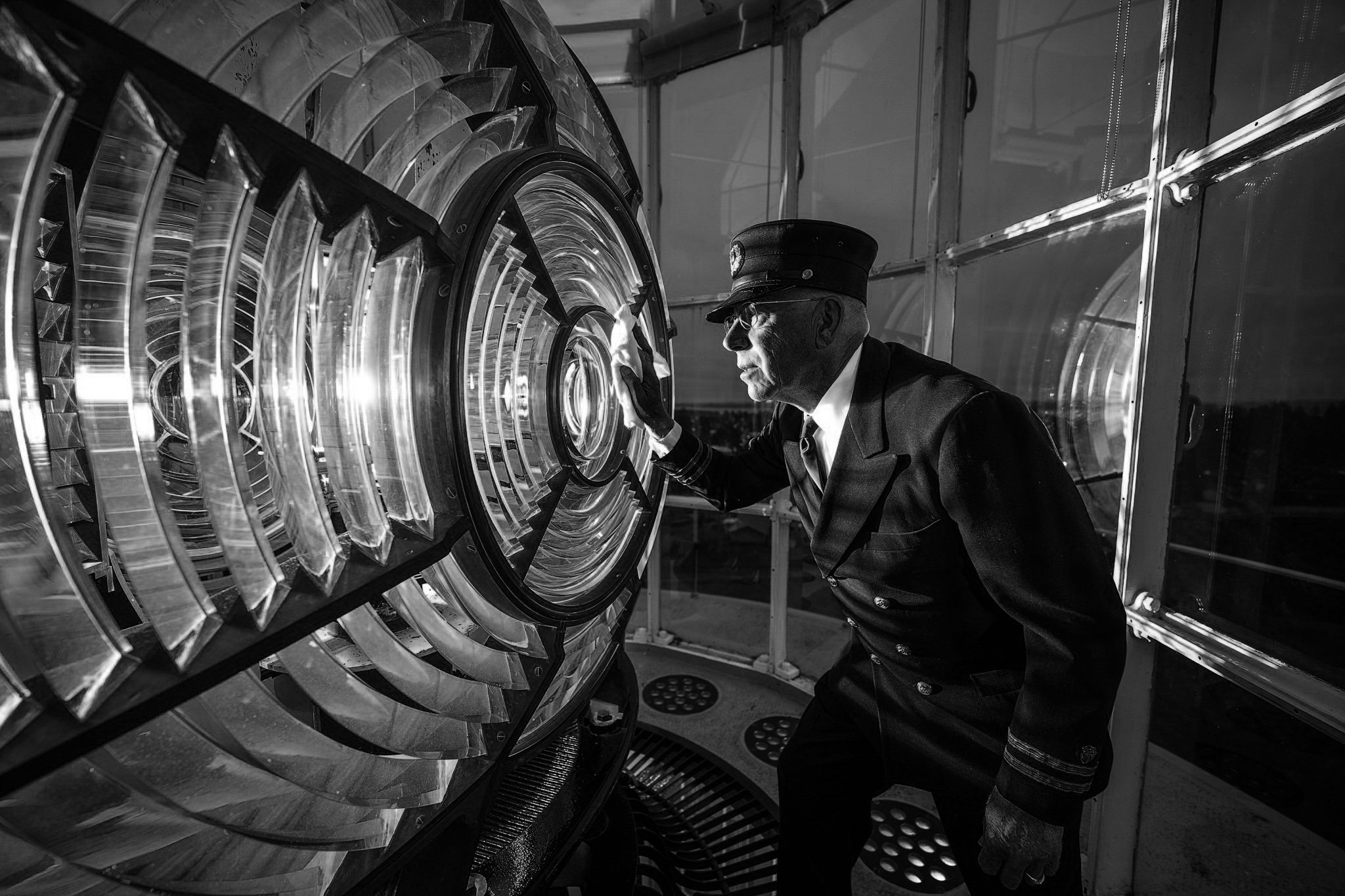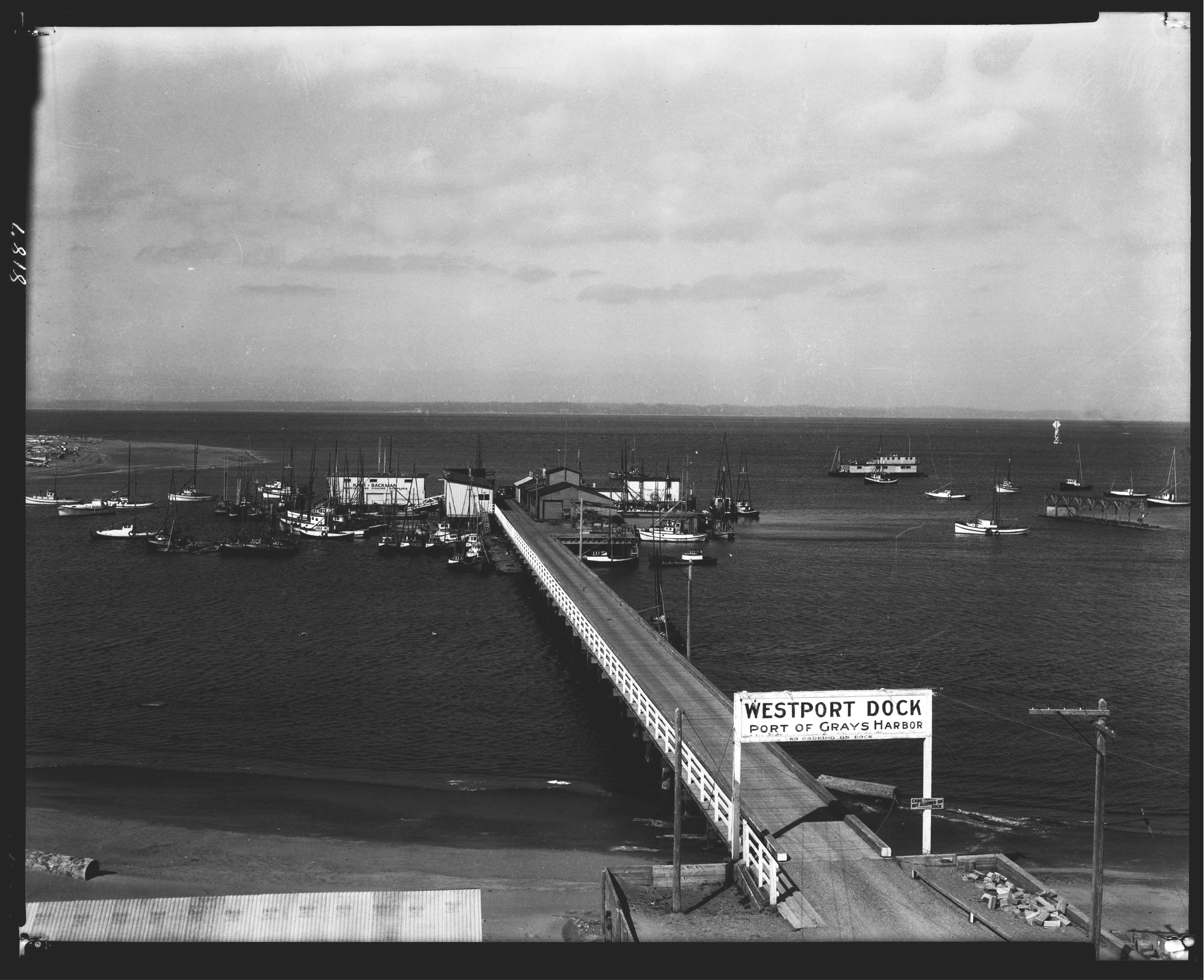Main Street, Westport — circa 1905 — ©Photograph Copyright Anderson & Middleton Company
In the Beginning
The town of Westport is located in Grays Harbor County, on the south shore of Grays Harbor. Originally home to a large Chehalis tribal village, the Native peoples were decimated by a smallpox outbreak, and then forced onto a reservation about 60 miles inland. Incorporated in 1914, the town has always relied on fishing and maritime industries such as seafood canning for its economy. After salmon restrictions were put in place in the late twentieth century, an economy began to grow around recreational activities such as surfing and charter whale-watching excursions. Westport still relies on fishing and associated canneries, but is also home to a shipyard that produces luxury yachts. In 2010, the population of Westport was 2,099.
Early Days
Chehalis Tribal peoples initially populated the area now known as Westport. The Chehalis ate fish as a diet staple, and constructed longhouses with one end open to the water for easy salmon collection. When non-Indians started arriving, diseases such as smallpox and malaria spread. But it wasn't until 1853 -- and the landed settlement of the new arrivals -- that disease truly devastated the Chehalis Tribe. A smallpox outbreak originating from a boat in Neah Bay was referred to as the Big Sick. Thousands of Chehalis died, and the village was all but abandoned.
The American fur trader Robert Gray (1755-1806) was the first explorer to happen upon the harbor that would one day bear his name. Captain of the ship Columbia in May 1792, Gray called the harbor "Bulfinch" after an Eastern sponsor of the trip. But Gray had bigger fish to fry: He didn't stay for long in the harbor before moving south along the coast, where he found the mouth to the Columbia River. In October 1792, Captain George Vancouver (1757-1798) sent his lieutenant Joseph Whidbey (1757-1833) to do a thorough survey of the south Puget Sound waters. Whidbey didn't see much use for the bay they renamed "Gray's Harbor," and probably didn't explore much of what he called Point Hansen -- or Point Chehalis, which would later become the city of Westport.
In 1825, the Scottish botanist and naturalist David Douglas (1799-1834) made his way to Point Chehalis while collecting plants around the Pacific coast. After having a bit of trouble with an old knee injury, Douglas and his Native American guide made camp on the point, only to be welcomed to recuperate at a Chehalis camp across the bay.
Aerial view of Westport — 1941 ©Photograph Copyright Anderson & Middleton Company
U.S. Lifesaving Station exterior with uniformed personnel — circa 1910 ©Photograph Copyright Anderson & Middleton Company
Westport's Life Saving Station
One of the most enduring additions to Westport came as a result of the formation of the national Life-Saving Service, in 1871. Several stations along the Washington coast were established to help troubled boats at sea. In 1897, a station was created at what would later become Westport. In 1898, light and fog signals were added to the Lifesaving Station. The Gray's Harbor lighthouse was visible 23 miles on a clear day, according to McCausland's Washington's Westport.
By 1917, the Lifesaving Station had been taken over by the United States Coast Guard, which took over lighthouse duties in 1939. Listed on the National Register of Historic Places in 1977, ownership of the lighthouse was transferred to the Westport-South Beach Historical Society (operating as the Westport Maritime Museum) in 2004. The Maritime Museum opens the lighthouse to visitors year-round.

Crowd at Westport Salmon Derby - 7/31/54 ©Photography Copyright Anderson & Middleton Company
Developing and Politicking
Around the turn of the twentieth century, Westport was already being billed as a destination of sorts for summer recreation. "The inhabitants of Westport are preparing to entertain a larger number of visitors this season than ever before. Already the season has opened, and every boat unloads health and pleasure-seekers," reported a Seattle Times article from 1902 ("Westport"). The town was not simply a tourist spot, however, and some began demanding technological upgrades to match its status as the first point of contact for the Gray's Harbor shipping and mill industry. In 1908, private shipping companies raised funds to provide a "wireless telegraphic system" between Aberdeen and Westport for quick and easy communication ("Grays Harbor Soon To Have Wireless System").
In 1913, the United States Geologic Survey map showed some real growth in the area, listing a total of 133 buildings. On June 16, 1914, the residents of Westport voted to incorporate. The vote was held with a total of 112 votes cast -- 96 voted for incorporation, 16 against. Lloyd Cook was voted the first mayor of the town, although he later resigned amid claims that he lived outside city limits. The city council installed William Ingram in his place.
Westport business district facing dock — 8/24/1964 © Photograph Copyright Anderson & Middleton Company
In 1923, another mayoral issue came to a head in Westport when incumbent Gustaf Nielson (sometimes called Nielsen in news stories) refused to give up the office to F. M. Smith. While Smith had a small margin of victory according to ballots, Nielson claimed that Smith hadn't filed for office and was using unofficial ballots to justify his own wins and those of several other council members. Although it appears that Smith failed to win that particular battle right away, city records show that Fred Smith did win the 1925 election. He stayed in office until 1928.
Along with a reputation for a dizzying line of mayoral succession, Westport became well known as a center for whaling during the 1920s. One June 1920 Seattle Times article counts 54 whales caught by the Grays Harbor whaling fleet in a little under two months time. Fishing in general was huge commerce in Westport throughout its early history, and in 1937 commercial tuna fishing began taking place off the coast. Some fishing seasons proved much more successful than others: In 1943, one schooner reported a load of shark livers worth a whopping $16,000 from one trip.
Aerial view of Westhaven — 6/20/1965 ©Photography Copyright Anderson & Middleton Company
A Maritime Economy
At the outset of World War II, the United States Army added gun emplacements and dispatched soldiers to Westport to guard against further Japanese attack after Pearl Harbor. Lights were verboten after dark; McCausland's Washington's Westport reports that the Coast Guard struggled in the dark with distress calls. Within a few months from the start of the war, the army had moved out of Westport, but that didn't stop a wartime economy from growing. The army ordered huge quantities of salmon and halibut to feed soldiers stationed at camps, and Grays Harbor fishing boats wasted no time meeting the demand.
Shortly after the war, fishing took on an even more important role in the Westport economy when a basin was dredged along Westport's coast to accommodate greater moorage space. Upgrades to the Westport Marina brought commercial and sport fishing vessels, and by the end of the 1940s their business proved good enough to maintain two stores, two fish-packing plants, a tavern, and a restaurant.
During the 1950s and into the early 1960s, the Army Corps of Engineers contributed safety improvements to the harbor. Floats were added and increased docking space to 646 berths, including 63 private spaces. In the 1970s, the Grays Harbor Pilots Association was formed. Pilot boats, designed to offload a pilot to an incoming ship to guide the vessel into the harbor, are still used in Grays Harbor and moored at Westport. Also an offshoot of the marine economy, canneries became a big business in Westport to keep up with the catch, either as fresh fish retailers or commercial processors.
Fishing Controversies and Hard Times
But as the 1970s began, commercial and sport fishing was hit hard. The 1974 Boldt Decision recognized American Indian treaty tribes' right to half the annual catch, and subsequent restrictions (a shorter fishing season and a two-fish-a-day limit) enraged non-Native operators and enthusiasts. In 1976, 38 Westport commercial fishermen received a contempt citation for fishing on June 28, defying a ban on fishing before July 1st. The ban resulted from a court decision designed to allow more salmon to reach Native American fishing grounds, reiterating American Indian fishing rights. As fishing seasons shrunk, the fishing industry in Westport was left scrambling. In the 1980s, Grays Harbor was one of only three Washington counties that lost population.
The reality became even starker in the 1990s when a ban on ocean salmon fishing took place for a year in 1994 as a response to dwindling salmon runs. Westport and other marine-centric towns scrambled to find an economic replacement for the salmon haul, while federal aid provided $16 million in disaster relief to communities hit hard by the ban. Westport did manage to find an economic boon in the expensive yachts being built by Westport Shipyard, Inc.
Founded in 1964, the company was established as a manufacturer of salmon and crab boats. It then moved into composite recreational boats, and from 1998 to 2003 saw enormous growth in the luxury yacht industry. The company grew from 70 to 400 employees, and has subsequently expanded to include facilities in both Hoquiam and Port Angeles.
Boats MAR-LYN II, and LADY HELEN — 6/8/1965 ©Photography Copyright Anderson & Middleton Company
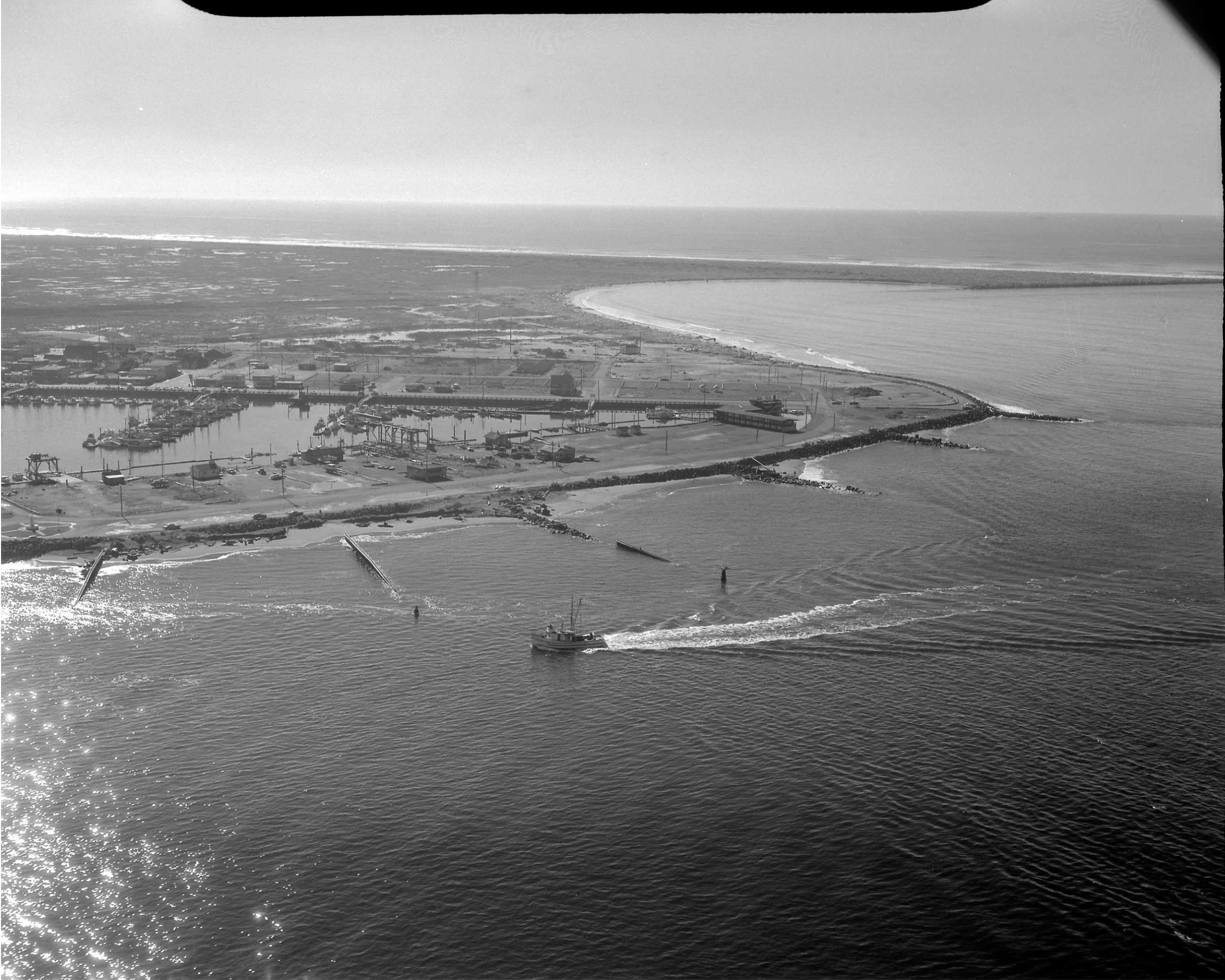
Recovery and Renewal
As the upheaval of the 1990s fishing controversies simmered to a close in the 2000s, Grays Harbor and the town of Westport began to see a spark of hope in new development. As the population reached above 2,000, Westport's charter boats began finding new resources to fish for: Rockfish, lingcod, tuna, and even shrimp and crab fishing began to act as replacements.
And some surprising new industries began to take root in Westport, as surfers began flocking to the waves and wildlife enthusiasts began seeking charters for whale and bird watching. At the 2010 census, Westport had 2,099 residents.
Source: HistoryLink.org Essay 10723 by Kate Kershner
Westport Fishing Derby — circa 1958 ©Photography Copyright Anderson & Middleton Company
History of the Grays Harbor Lighthouse
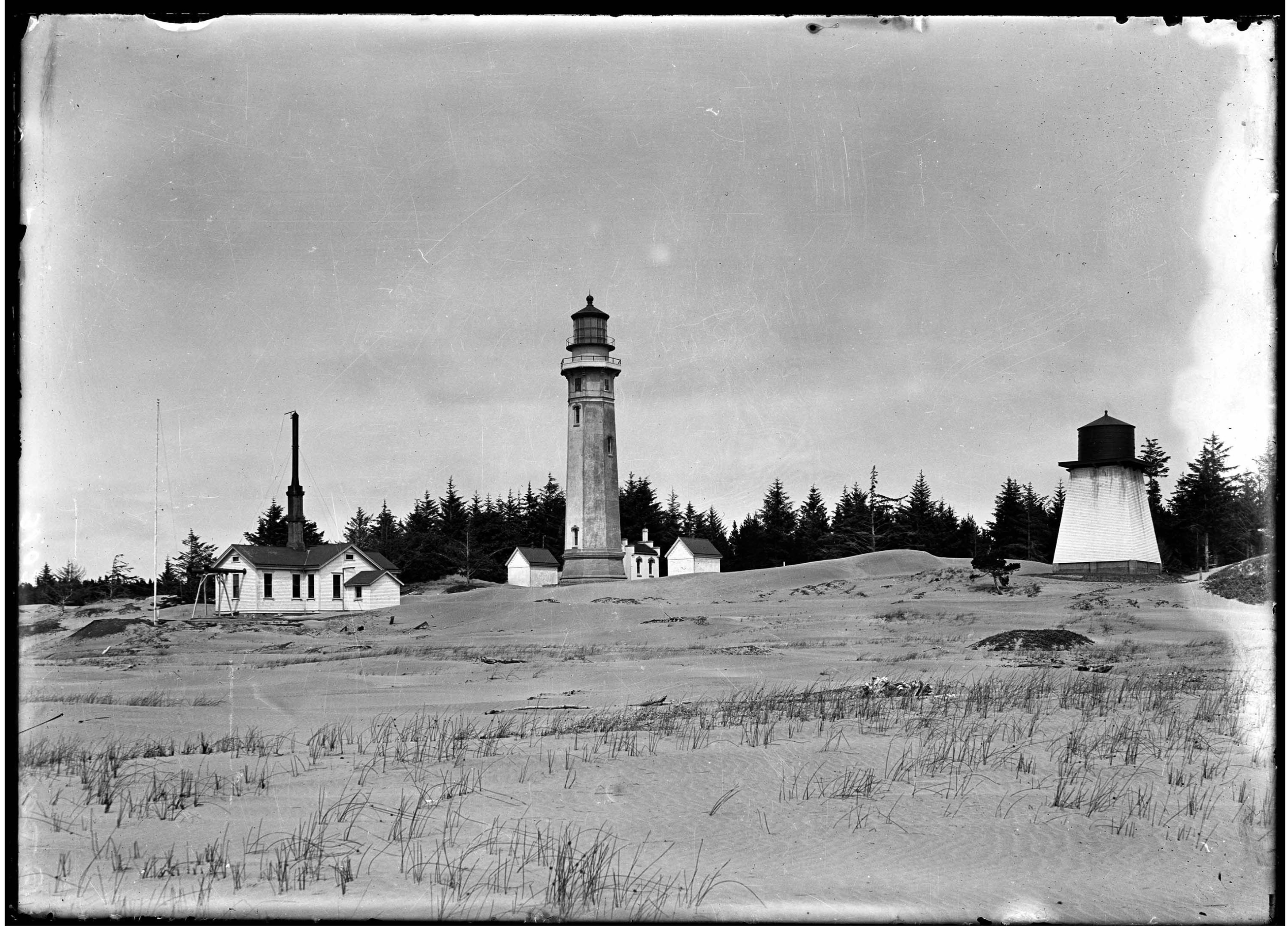
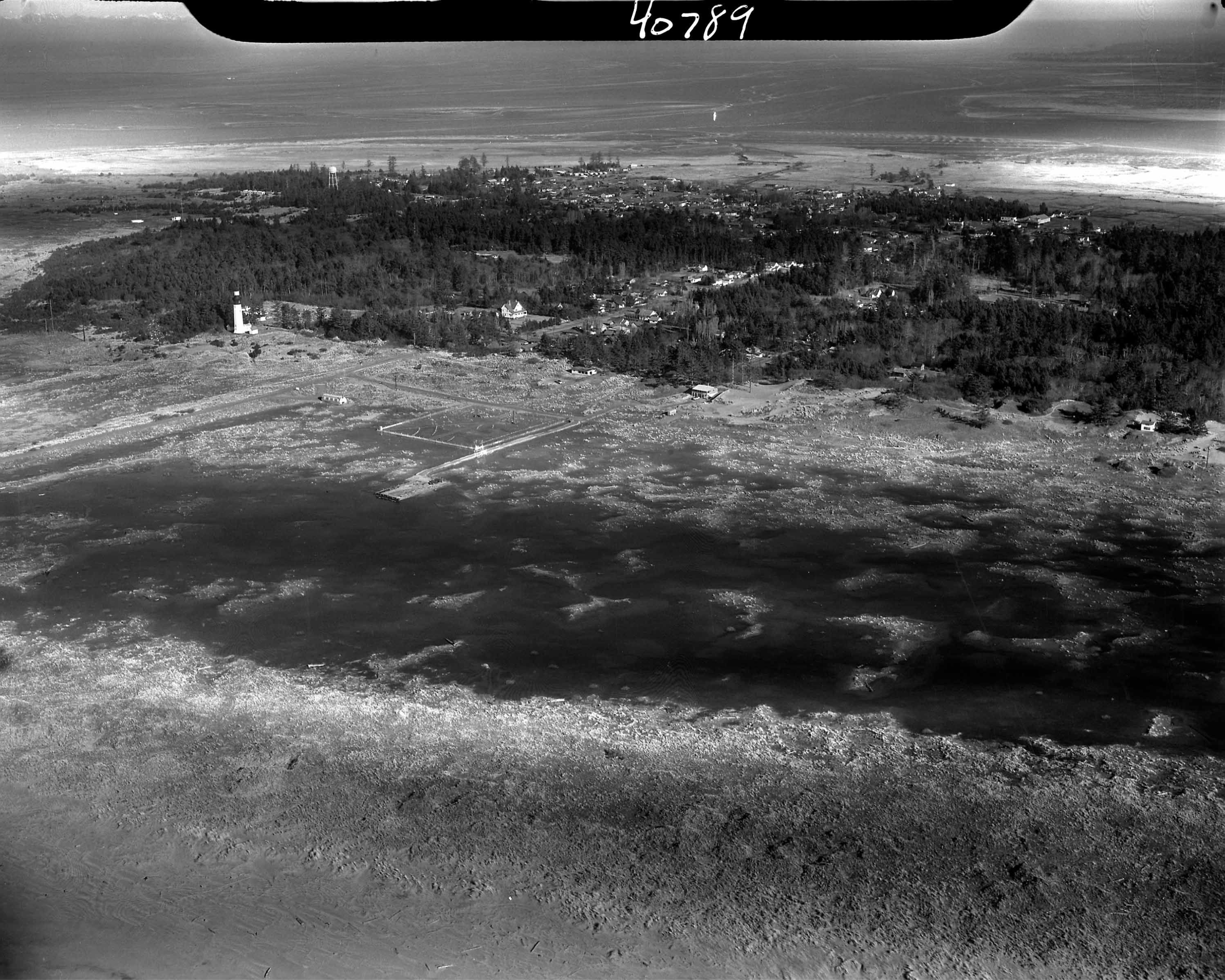
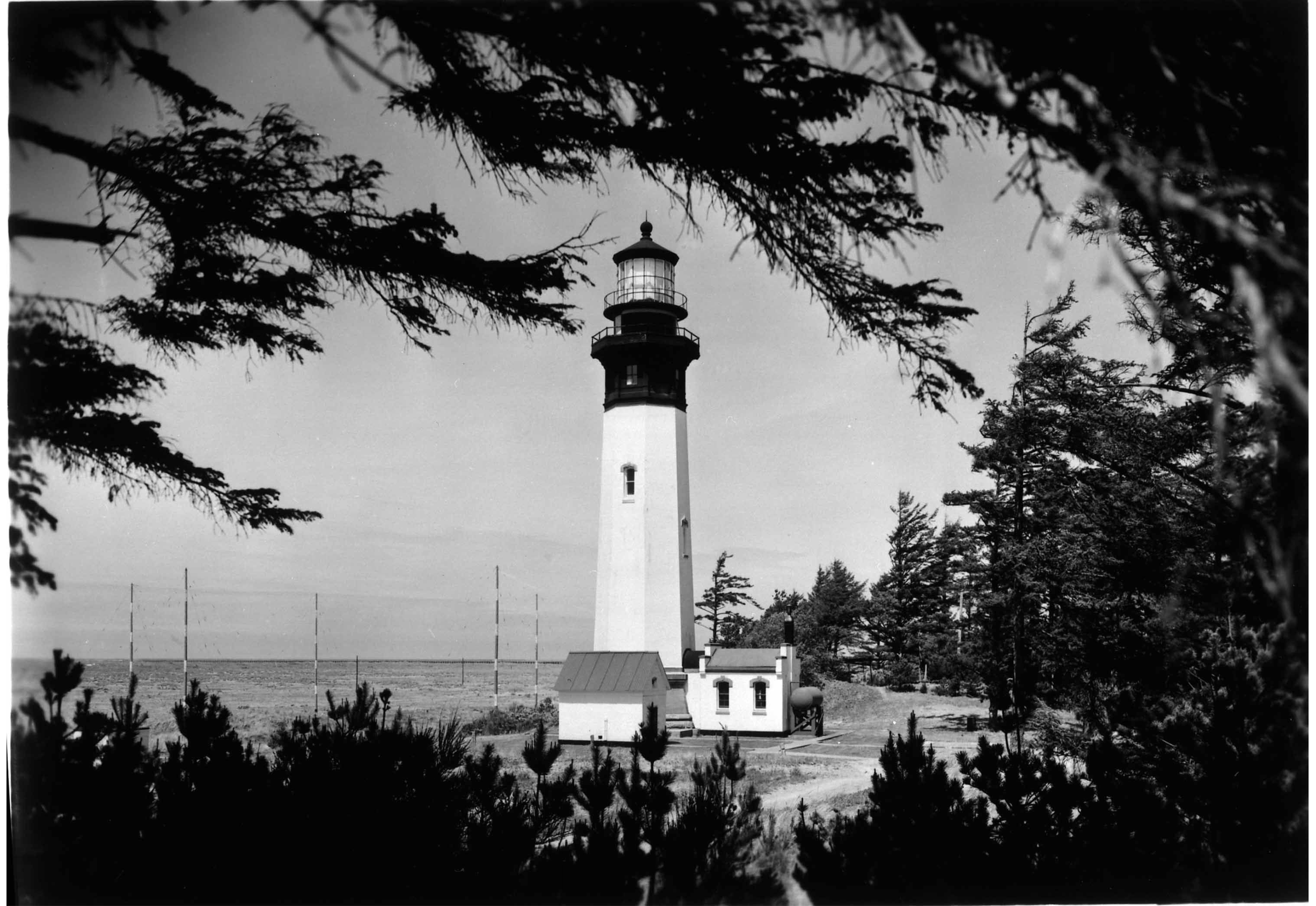


At 107 feet tall, the Grays Harbor Lighthouse is the tallest lighthouse in Washington State. Considered by its architect, Carl Leick, to be his masterpiece, the Grays Harbor Lighthouse is the pride of Westport, Washington, and Grays Harbor County.
Construction of the lighthouse began in 1897. On June 30, 1898, a dedication ceremony was held at the base of the lighthouse and that night marked the first official service of the Grays Harbor Light.
The walls at the base of this octagonal structure are four feet thick, tapering up to an 18 inch width. They are made up internally of red brick and coated with concrete on the inside and outside. A metal structure completes the top of the tower.
There are 135 steps leading up to the lantern room. The staircase is original and forged of cast-iron. The manufacturer of the metalwork was Patrick Dundon of San Francisco Boiler Works. The landing brackets are pieces of artwork themselves. They are mounted to the wall to support the landings; the staircase is self supporting.
Unlike many lighthouses, the Grays Harbor Light still houses the original 3rd order clamshell-shaped Fresnel lens. This lens was built in Paris, France in 1895 and visitors can climb to the lens (or lantern) room level. The flash pattern of this lens was, and still is, red and white to mark the opening to Grays Harbor. As the lighthouse itself is still an aid to navigation, visitors are able to see the current beacon mounted to the outside railing.
With a 360° view of the ocean and surrounding areas, it is a photographer’s dream. Come on a clear day and you might even be able to see the top of Mount Rainier to the east.
Visit our Museums & Lighthouse!
Visit the Westport Maritime Museum and the Grays Harbor Lighthouse to experience our rich history in person!
